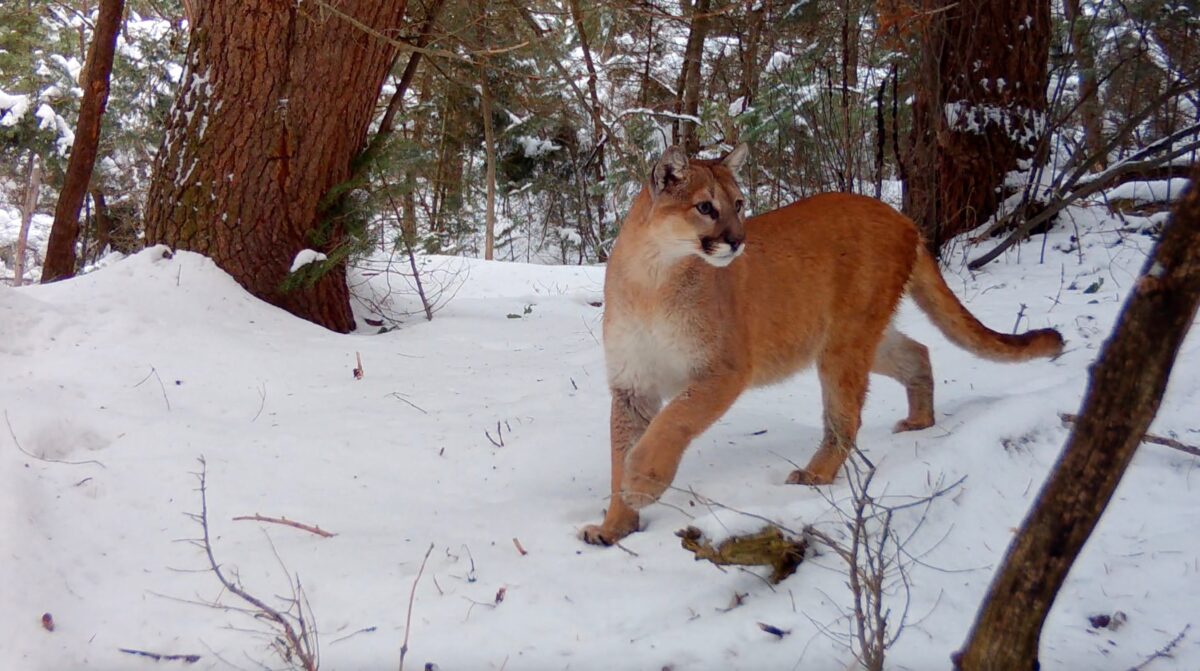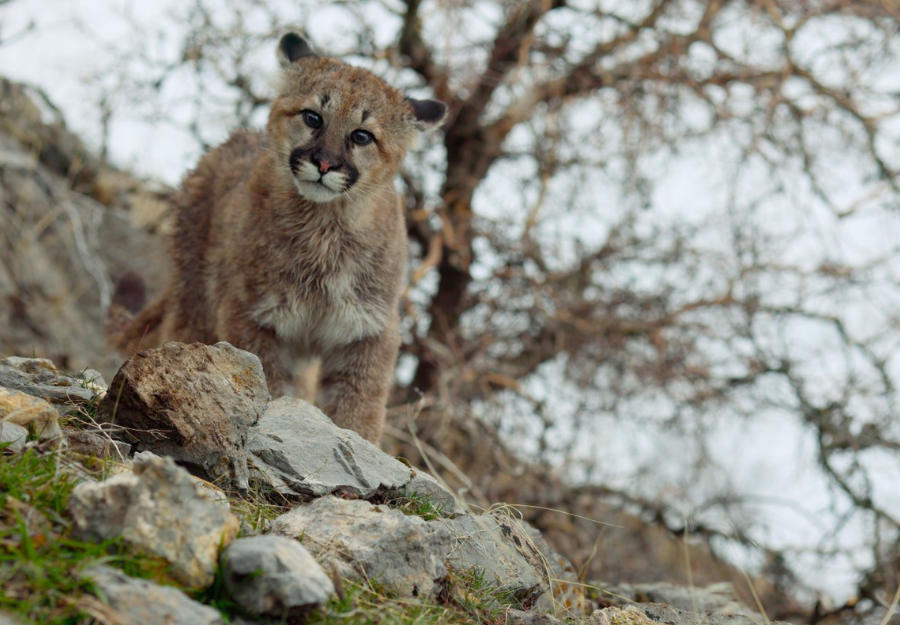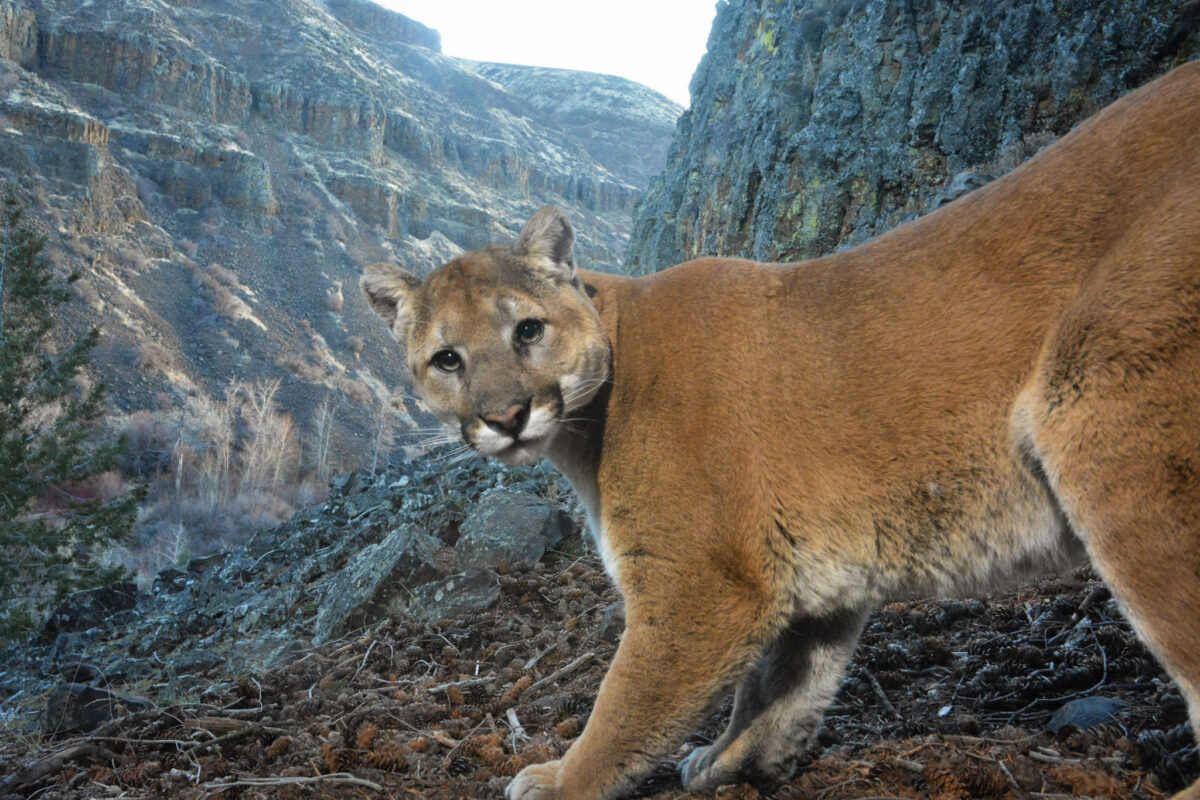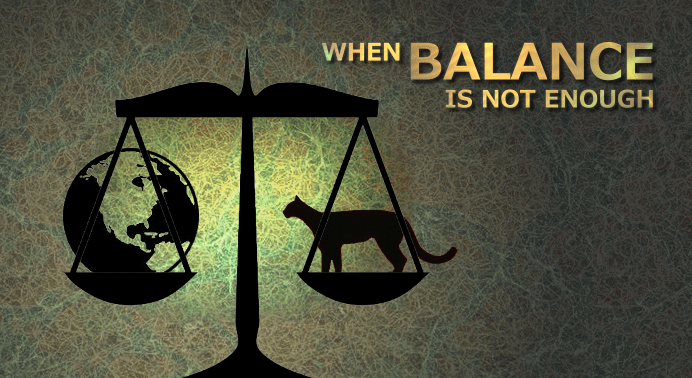
When Balance is Not Enough
The value of predators, large and small, is complex and commonly misunderstood. Predators, even those at the very top of the food chain, play a vital role in sustaining other animals and plants within their range. Consider this real world illustration of that principle.
When the Panama Canal was dug, a new lake rose in Central America. As waters rose, a hillside, rich with wildlife, was isolated as the surrounding lowlands flooded. The Smithsonian Institution recognized the value of this unique island, where research might demonstrate the effects of isolating small pieces of habitat.
Cougars soon disappeared from the new island. This was no surprise, since lions require such a large territory for even a single animal. Over the years, a catastrophic series of local extinctions occurred. By 1970, forty-five species of birds had disappeared from the island.
Scientists Joyhn Terborgh and Blair Winter hypothesized that surging populations of mesopredators (carnivores one step down from the largest and most dominant), over-populated because they were no longer subject to predation by, or in competition with, large carnivores. With so many additional animals feeding upon bird eggs and nestlings, bird populations plummeted.
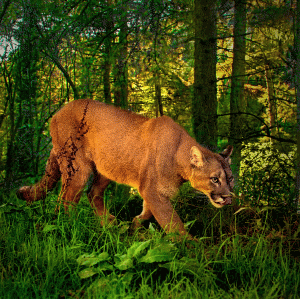
In addition, the number of plant varieties found on the island diminished, and soon it became difficult to find young saplings of the canopy trees. Again, researchers traced the changes back to the loss of large predators. Populations of herbivores exploded, and fell upon the flora of the island with a vengeance, tugging up young saplings for their tender leaves, devouring all of the individuals of whole species that had inhabited small niches.
What about the middle-sized mammals in their new, and relatively “safe” situation. Without large predators to cull the weaker, older, and disease prone animals, several generations are born and pass on less hardy genes. But when food becomes scarce as a result of prey extinctions and over-populations, some species, despite their increased numbers, find themselves at a genetic disadvantage, unable to compete, subject to epidemics, and prey to more viable or adaptable species. As the ecosystem crashes, these middle species, too, may disappear.
In the approach to environmental conservation known as “rewilding,” large predators like the mountain lion are counted as “keystone” species. In summarizing The Role of Top Carnivores in Regulating Terrestrial Ecosystems, leading biologists John Terborgh, et.al. conclude that “our current knowledge about the natural processes that maintain biodiversity suggests a crucial and irreplaceable regulatory role of top predators. The absence of top predators appears to lead inexorably to ecosystem simplification accompanied by a rush of extinctions.”
Eventually, nature balances. But on a scale of diversity, balance without predators carries much less weight. Fewer species occupy fewer ecological niches. It is a balanced environment, but a much poorer one, severely degraded by the cascading losses, right down to the birds and flowers, caused by missing carnivores.

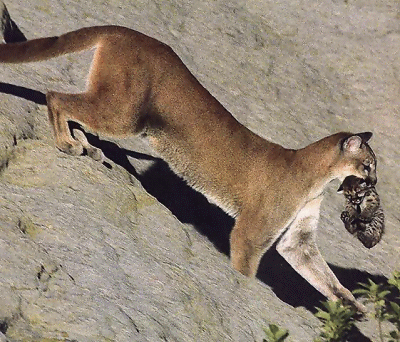 Humans in the ecosystem tend not to perceive themselves as interdependent with the natural environment. Regardless, natural substances, derived from a diverse planetary flora and fauna, form the basis for much of our science, agriculture and industry. Natural systems contribute to the quality of the air we breathe, the water we drink, and the foods we consume. We turn to natural landscapes for recreation and renewal.
Humans in the ecosystem tend not to perceive themselves as interdependent with the natural environment. Regardless, natural substances, derived from a diverse planetary flora and fauna, form the basis for much of our science, agriculture and industry. Natural systems contribute to the quality of the air we breathe, the water we drink, and the foods we consume. We turn to natural landscapes for recreation and renewal.Large carnivores have a tremendous symbolic value: they personify the wild. Humans have been gifted with a special ability to appreciate diversity beyond mere survival. We value wilderness aesthetically. We mourn the loss of the grizzly and the wolf, and memorialize them on flags and t-shirts.
And yet, even in California where cougars are protected, wild cougars are killed in relentless pursuit of public safety and protection of domestic animals. Their range is fenced off with policies as rigid and pointed as any barbed wire.
At some point we must take the time to reflect on the worth of wildness. At what price can we imagine a world entirely empty of natural threats, a “safe” suburban Serengeti?
Perhaps it is in this realm of human and carnivore interactions that the concept of re-wilding has the greatest value. For example, the vast territories required by carnivores force biologists, land use planners, and government decision-makers to take the larger view, to preserve bigger tracts of land, to connect reserves by corridors, and thus to limit urban and suburban sprawl.
A more progressive approach to addressing environmental problems will recognize the value of mountain lions, and will make a commitment, not only to their survival, but to their dominance upon our remaining natural landscape.
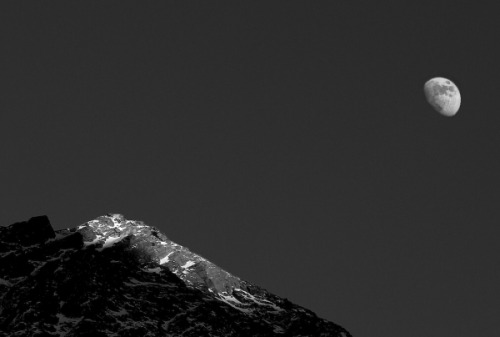



 Facebook
Facebook Twitter
Twitter Send Email
Send Email